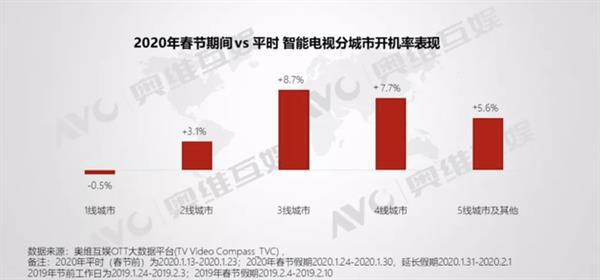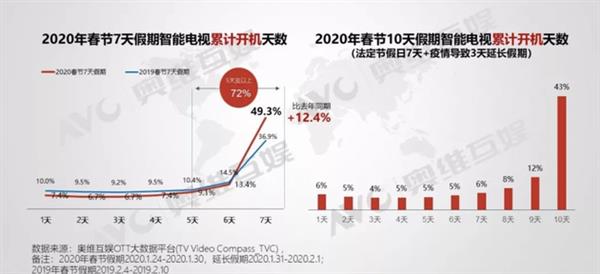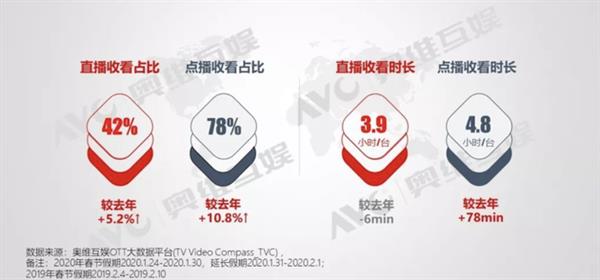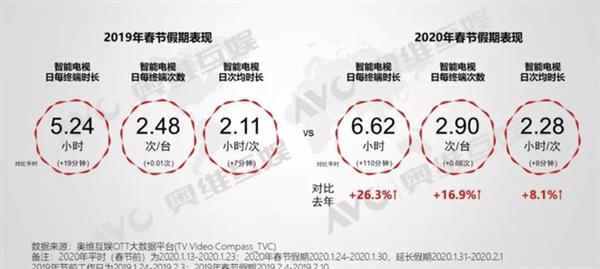TV viewership in China during the Spring festival this year rose to an all-time high as a result of the restrictions and extended holidays. More persons spent time in front of smart TVs and mobile phones away from the traditional holiday settings.
Data obtained from Aowei Cloud shows that the overall smart TV boot rate during the Spring Festival increased by 11% compared with normal times. There was no decline during the three-day extended holidays. Affected by the epidemic, the daily activity of first-tier cities this year has decreased, and Spring Festival migration has driven the growth of cities below the third-tier. Compared with last year’s Spring Festival, over 70% of the those who cumulatively switched on their smart TVs did so for more than five days. Also, the proportion of cumulative start-ups for 10 days reached 43%.
EDITOR’S PICK: Xiaomi’s Aqara officially unveils its range of smart home products in the US
Some of the reasons adduced for the change in TV viewing trend includes
1. After the prolonged holiday policy was introduced, suddenly, many families did not have a clear plan to arrange activities during this time, and rich smart TV entertainment became the best solution to supplement the blank plan.
2. Due to travel restrictions, family activities are centred on television, which is more suitable for multiple people to live together and share the family.
In addition, smart TVs shoulder media responsibilities in special periods, with media coverage reaching urban and rural areas.
Smart TV boot rate have declined in first-tier cities before now but the decline was significantly reduced compared with the same period last year. The “sit-at-home holiday” made smart TVs an important medium for family members to obtain information, and the start-up rate in each city has increased significantly.
In the traditional 7-day holiday, the proportion of households that have turned on their TV continuously for 7 days is higher than 12.4% in the same period last year. Waking up and turning on the TV every day has become the holiday habit of nearly half of families.
This habit was still maintained during the extended 3-day holiday, with the proportion of the families that have turned on their TV continuously for 10 days reaching 43%.
From this data, we can understand that the necessity of smart TVs for families, combined with the integration of information, audio and video entertainment, greatly met the recreational needs of users during the “sit-at-home holiday”. Smart TVs still continue to play a significant role as China is still battling the epidemic after the Spring Festival and thus, there are still restrictions in social activities that create a fertile ground for person-to-person transmission of the Coronavirus.
UP NEXT: First Samples from the 108MP Mi Mix Alpha is here & we are not impressed!
(via)




